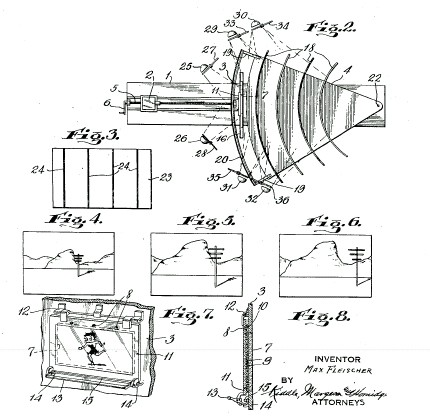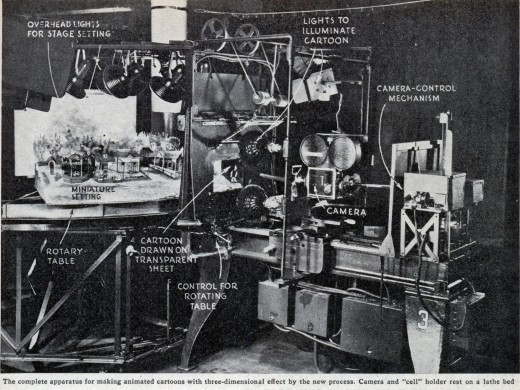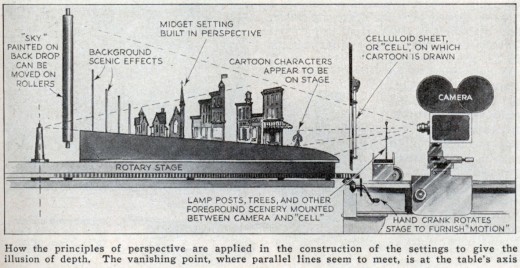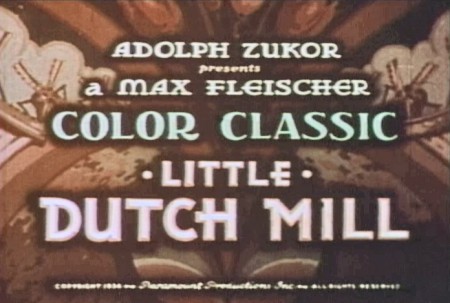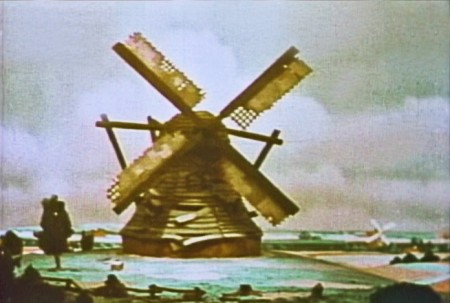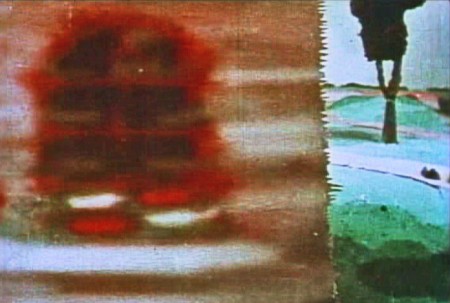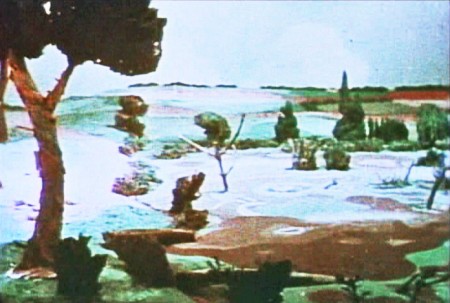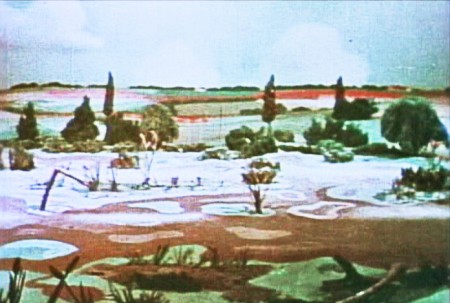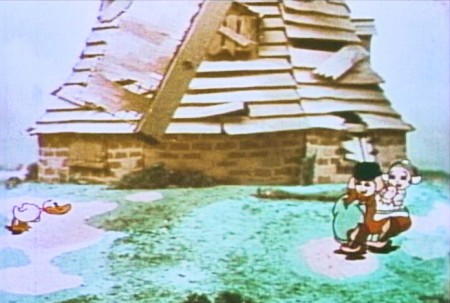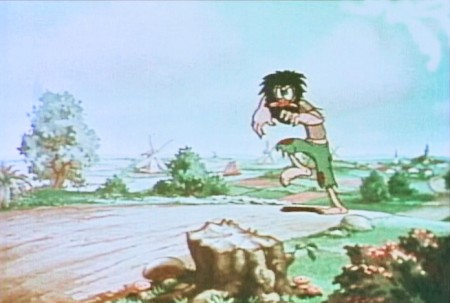Monthly ArchiveAugust 2011
Fleischer &Frame Grabs 01 Aug 2011 06:30 am
Fleischer’s 3D Multiplane – Little Dutch Mill
- We’ve been looking at the Disney multiplane camera, but let’s keep going back in time. The Fleischer studio had its own 3D setup, and it was very different from the Disney version. Little cartoon sets were constructed on a horizontal setup with the cels being placed in the foreground of the set. These sets could move east and west or in a circular motion. The 2D animated cels stood in front of the moving set and it gave the effect of a 3D world behind them. The end result was to show the 2D cels moving in front of a 3D set.
Here are some stills and artwork showing how the contraption worked.
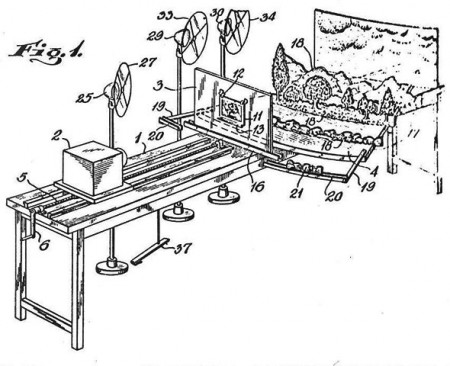
Images from the patent application for the Fleischer 3D multiplane camera.
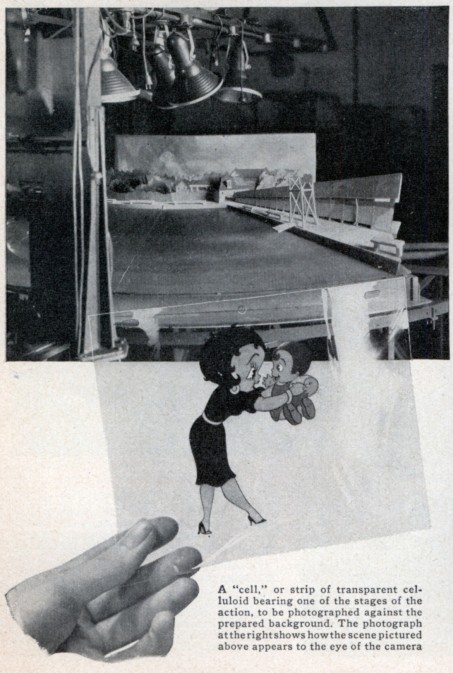
Images above from Modern Mechanix/November 1936
One of my favorite cartoons that really showed off this process, was a color cartoon called, The Little Dutch Mill. There was a lot of rotation of the characters running and skipping around the mill, which, of course, had the blades turning. It felt like the rotation was 360°, but that certainly couldn’t have been the case. But it was well planned to make it feel as though that were happening. Here are some grabs of scenes that employed the specialised camera.
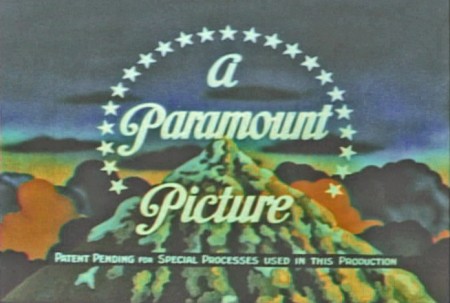 1
1Disney still had the rights to Technicolor, so the
Fleiscers used the 2-strip Cinecolor – orange & green.
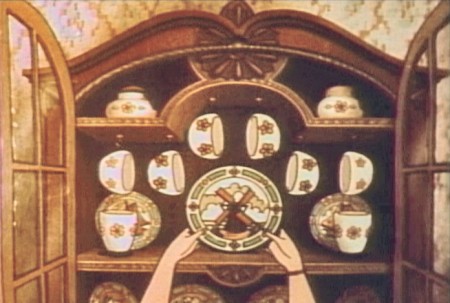 3
3
Here’s the first scene done as flat art.
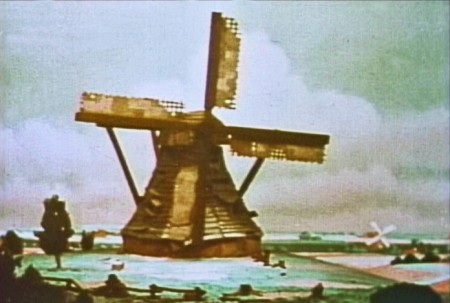 5
5
. . . which revolves as the kids enter the scene.
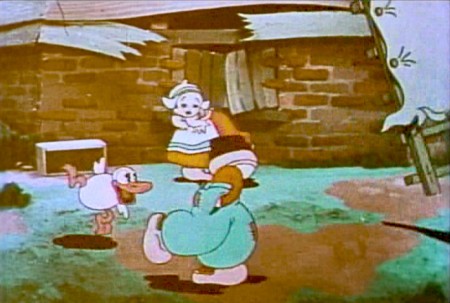 6
6
The closer shot of the kids looks flat, especially with that animated windmill blade.
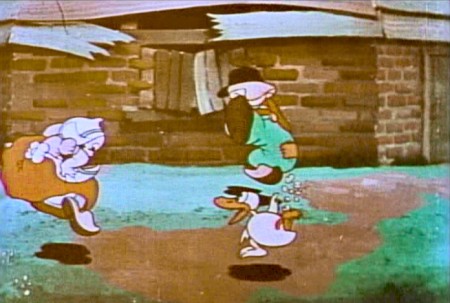 7
7
The mill isn’t revolving here.
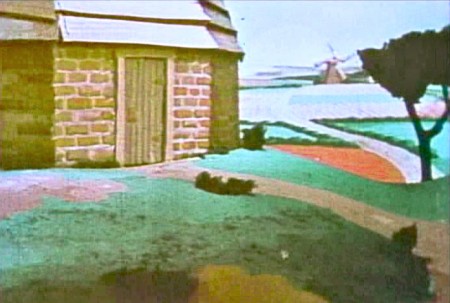 8
8
But the camera zip pans across to some 3D scenics.
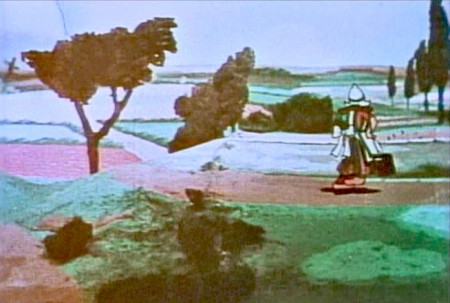 9
9
We follow a woman carrying water as she walks . . .
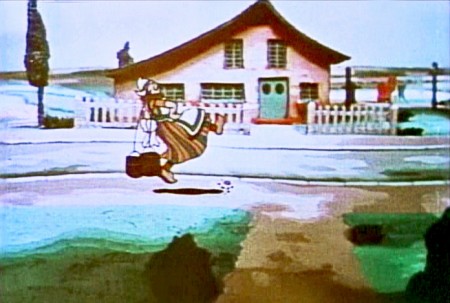 10
10
. . . into town. 3D movement on the BG.
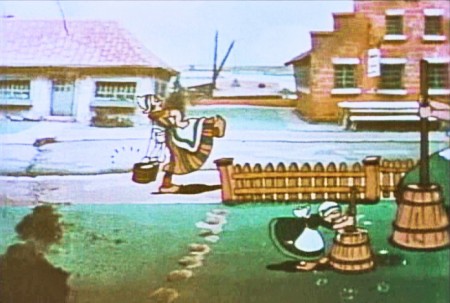 11
11
The woman, the picket fence level, and the
churning family have to match the BG movement.
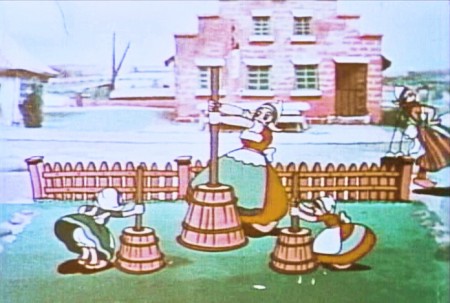 12
12
We stop on some kids & a woman churning butter.
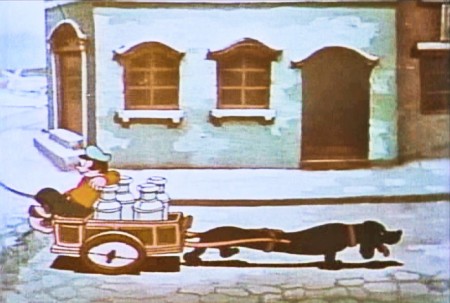 13
13
A dachsund leads a cart with a lazy guy.
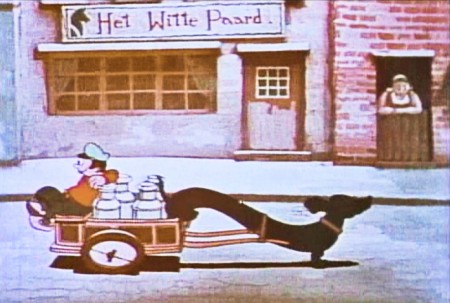 14
14
The town moves in 3D perspective.
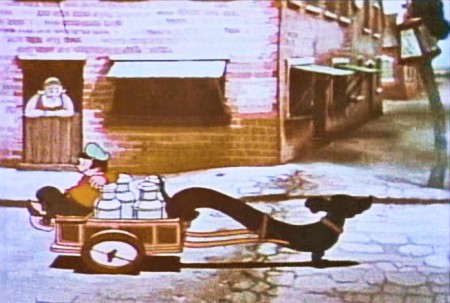 15
15
The dog & cart cycle is repetitive.
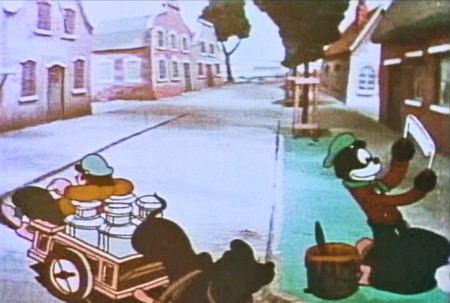 16
16
The cart turns toward the camera leading us toward . . .
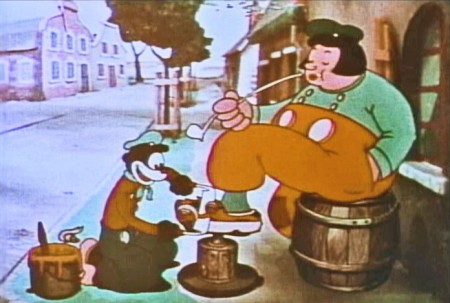 17
17
. . . a shoeshine boy carving away at the wooden shoe.
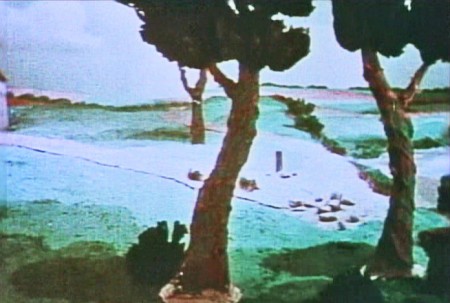 19
19
. . . to countryside that we seem to have seen before.
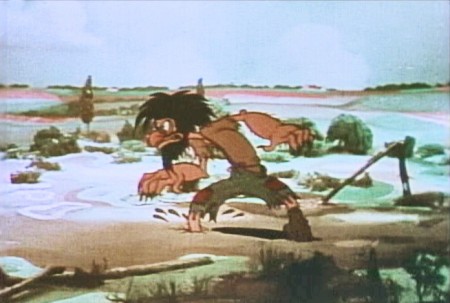 22
22
. . . the old miser/villain of the short.
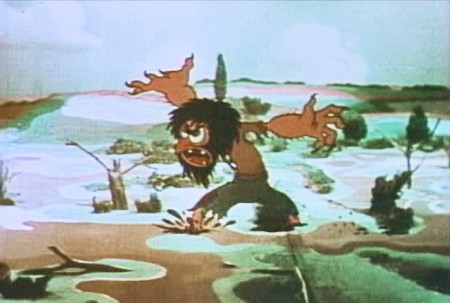 23
23
He rattles his nasty complaint.
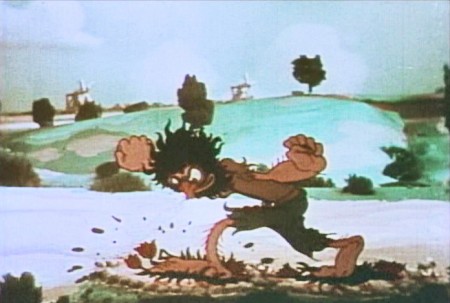 24
24
He steps on three tulip plants.
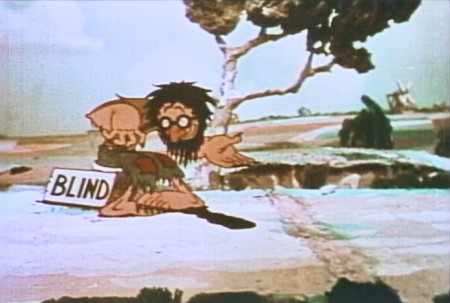 25
25
He stops to beg a coin from a fat guy with a pipe.
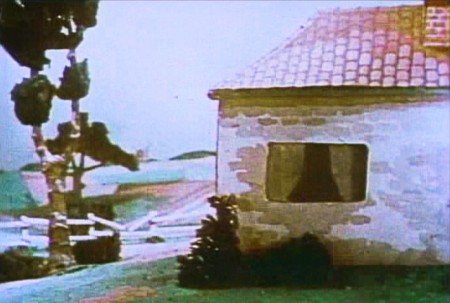 26
26
Another Zip pan to screen left.
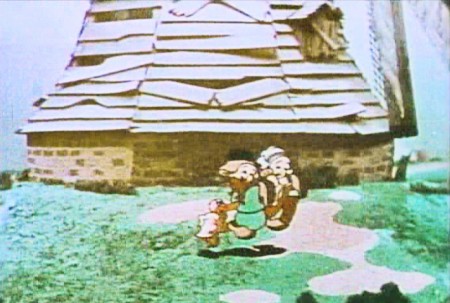 27
27
Back to the revolving mill. The kids are dancing with their duck.
There are a lot of other scenes that reuse the master BGs of the mill.
There’s only one other scene I want to feature which isn’t repeated frequently. Within the miser’s home, the town saves the day by cleaning things up. We get a pan across the place once the town has wiped everything down.
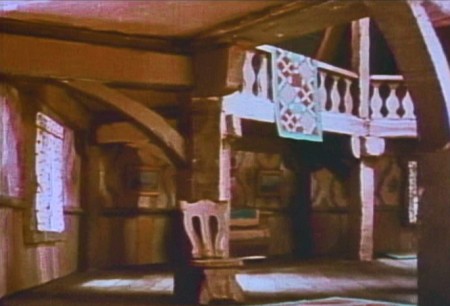 1
1We get a simple pan across the mill interior.
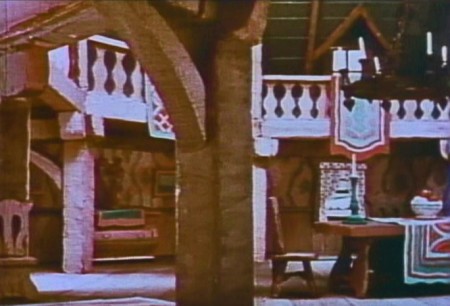 2
2
The pan shows off the 3D camera well. Everything is modeled and well constructed.
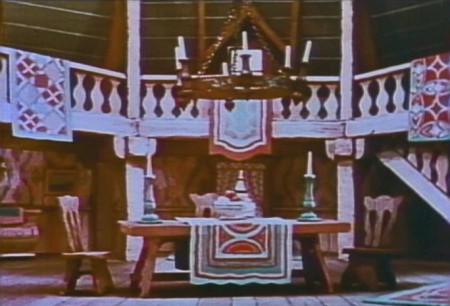 3
3
There’s no animation in the scene, so the BG looks great.
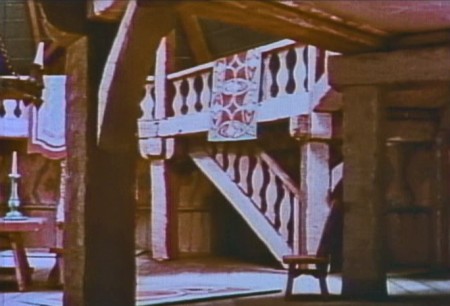 4
4
Most of the other interior shots of the mill are flat art,
so this scene is a stand-out.
Basically, other than a sweet story creatively told, there’s little more than the wonderful scenery moving. Oftentimes there’s not even animation or there are animated cycles moving in front of the panning BGs. The one regret is that the film hadn’t been done in
3-strip Technicolor.
